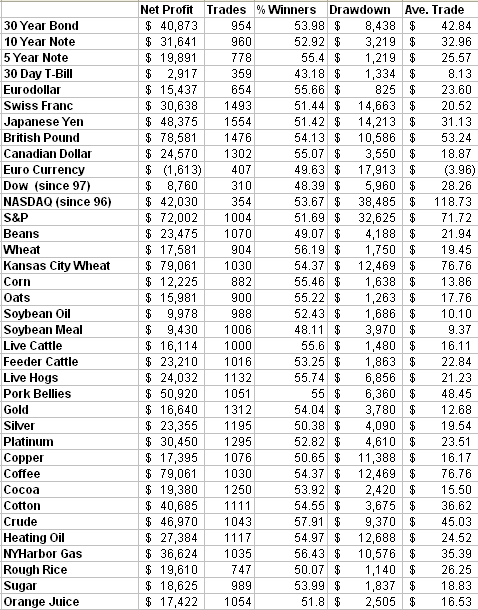In previous columns, we've examined futures market biases that predict the probable direction of the next day's open-to-close. An alternate signal focuses on overnight plays. That is, signals which enter on the close and exit on the following open. The tendency persists across all major future markets, not merely the financial ones routinely tracked in this column. Out of a testing period of 5,000 days (roughly 20 years), only one market out of 37 showed a slight negative result. This is a non-optimized, simple idea that works the same way across all markets over tens of thousands of trades. Perhaps most excitingly, the technique is elemental and unadorned. One can easily imagine bumping up the performance figures with a myriad of simple modifications.
The trading strategy involves a fairly familiar signal, albeit slightly modified here â€" that of the CUP long or CAP short. In my version of a cup, both the lowest low and the lowest close of the last three days occurred on the second (or middle) day. Picture a U shaped bottom â€" the market came down off day one, and then reversed direction. For a cap, it's the reverse â€" the highest high and the highest close both occurred on the second day.
If a cup is forming, buy on the close. It will take some occasional logistical footwork to ascertain whether the conditions are being met. (More often than not, you can quickly correct any miscue in early Globex trades.) You exit the trade the next open. Vice versa, if you determine a cap is in progress.

Figure 1 shows the results -- a bias that persists across the commodity trading gamut. This was pretty much everything I could test in June, 2004. Please forgive the fact that I haven't updated it since. (It involves a lot of work, and I think I've more than proven my point here.) The sheer volume of trades guarantees there is no fluke involved. Only the Euro currency posted a negative result. Some of average trade profits hover near a trade slippage commission barrier you realistically need to apply in actual trading. With some alternate entry points and filters lessening the total number of trades, it wouldn't take much to improve the system, maybe to the point where it can be an actual mechanical trading system.
Art Collins is the author of Market Beaters, a collection of interviews with renowned mechanical traders. He is currently working on a second volume. E-mail Art at artcollins@ameritech.net.